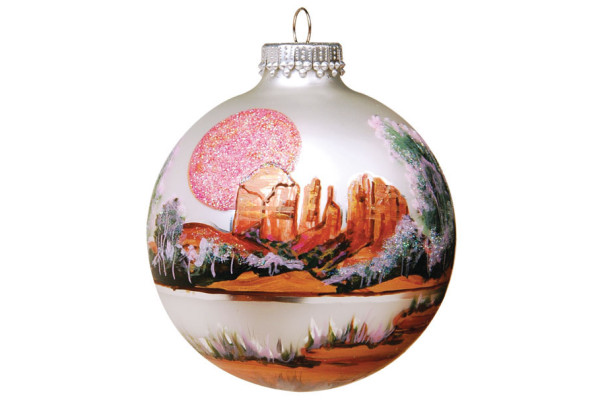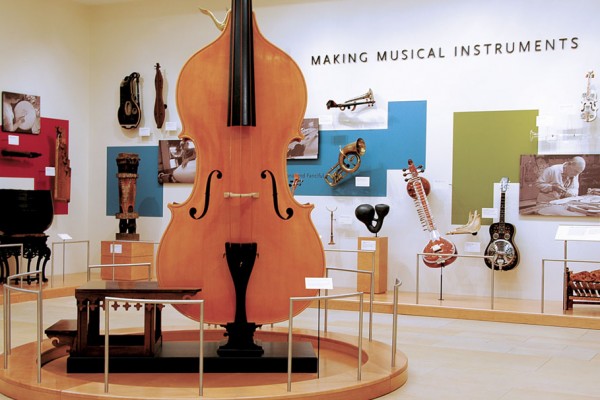Continued (page 5 of 5)
Doyle’s name appeared in Flagstaff newspapers regularly from the ’20s into the ’50s, but by every account he was a self-effacing, publicity-shy rancher who shunned the limelight. He died in the early ’60s. Nobody else came close to being as important to Sedona’s film history as Lee Doyle, but his name has been completely erased from the town’s collective memory, probably because it was to the advantage of others that he be forgotten. The fact that his contributions have been so totally deleted from history here is a disgrace. There are no plaques honoring Doyle in Uptown Sedona, but there should be a 10-foot-tall statue of him standing smack dab in the middle of 89A because he’s he man who put the town on the map.
For whom did you write Arizona’s Little Hollywood? Do you think it will have an impact on Sedona’s history?
The book is for someone like myself–– a movie lover. I took film history classes in college and loved going to see older movies at revival theaters. I was always interested in behind-the-scenes stuff, so I guess it was only natural that the book grew into being not just the story of the movies made in Sedona, but of its place in American filmmaking.
The book shows for the first time how Sedona’s history is not just locals growing apples. The idea that a small town promoted as a sleepy, isolated place in the middle of nowhere could have been involved in momentous historical events is incredible.
Your source listings in the back of the book are quite extensive.
I’m just a messenger delivering the facts, but I know I’m going to be challenged on a lot of what’s here, so everything in the book is sourced. It has close to 40 pages of notes and bibliography. I list every newspaper and magazine article, every book, every document that I consulted and every interview that I quoted. So anybody who wants to challenge me can check these sources themselves to see that I didn’t make any of this up.
For readers who followed the movie stories in the magazine, will they learn something new by reading the book?
Everything that was published in the magazine has been revised, most of it drastically, and every chapter contains new information. Much of the material has been completely rewritten and considerably expanded beyond the magazine stories. The chapter on Broken Arrow is a good example. The story ran as one page of text in the magazine. In the book it covers almost 20 pages. There are 18 sections that cover new titles and related background. I’m confident that anybody who reads this book will discover lots of things they didn’t know before.
You must feel passionately about Sedona’s movie history to have devoted nearly seven years of your life to this research.
It was the toughest thing I’ve ever done. I never set out to be a film historian and still don’t consider myself one. I’m a movie fan. This job was sort of thrust into my lap. But once I started, I felt an obligation to finish it. The truth had to be told, especially after it become obvious how rich Sedona’s past really is – there was no way I was not going to finish it. So I spent seven years putting the story together – it was a big chunk of my life and my family’s life –– because I knew that when it was finished Sedona would own a cultural legacy that it never could have imagined it had.
Want more Sedona movie stories? Check out our Arizona’s Little Hollywood blog
MORE SEDONA MOVIE HISTORY: Johnny Depp in Dead Man, the last western film set, the making of Johnny Guitar, the return of actors Clint Walker, Edd “Kookie” Byrnes, Robert Horton, and Morgan Woodward, Sedona movie locations today, Oscar winner shooting spot, an interview with Beatrice Welles
MORE SEDONA MONTHLY INTERVIEWS: Susan Sarandon, Joan Collins, Martin Sheen, Emilio Estevez, Lea Thompson, Don Black, Frances Fisher, Gary Sinise, Rita Rudner Robert Osborne, Michael Moore, Tim Daly, Maynard James Keenan, Richard Schiff, Connie Stevens, Don Hahn, Tony Curtis, Ed Harris, Marla Sokoloff, Bill Plympton, Jane Seymour, Robert Shields



